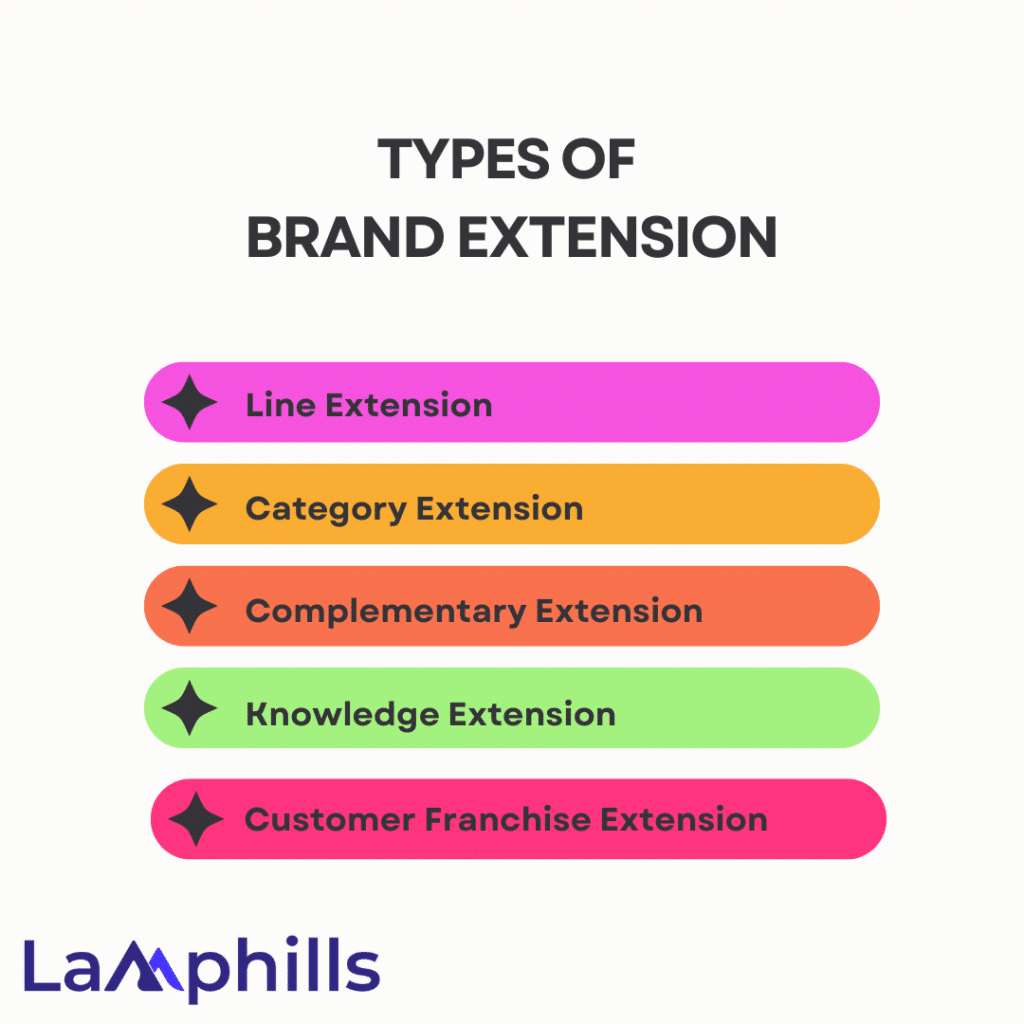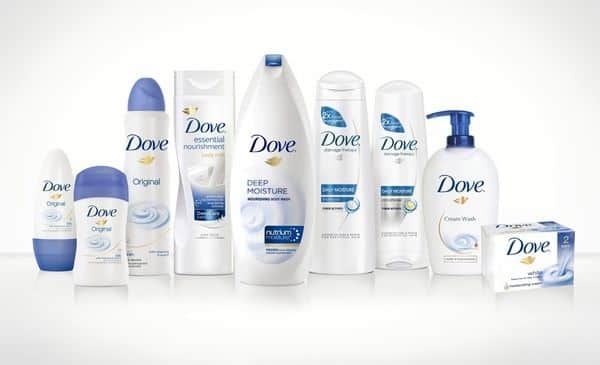When I initially started out in marketing, the concept of brand extension was both interesting and terrifying. I recall thinking, “How did they manage to pull that off?” After years of research, practice, and a few mistakes, I discovered that brand extension is a strategic skill that, when done effectively, can drive a brand to new heights. Here, I’ll show you everything you need to know about brand extension, including types, examples, and success strategies.
What is Brand Extension?
Brand extension is a marketing approach in which a corporation uses an existing brand name to introduce a new product or product line. This technique uses the parent brand’s brand equity to provide the new product a competitive advantage in the market. According to Statista, brand expansions accounted for over half of new product releases in the consumer goods sector in 2022.
Key Takeaways
- Brand extension occurs when an established company creates a new product under the same brand name as its existing items.
- Businesses that keep products common while maintaining constant quality may find success with this method.
- There are various types of brand extensions, and deciding on the best one for your firm will help you execute an effective brand extension.
Types of Brand Extension
#1. Line Extension

Line extension entails releasing new products in the same category under the same brand name. For example, a shampoo brand may introduce a new variation, such as anti-dandruff shampoo.
Example: Coca-Cola introduced Diet Coke and Coca-Cola Zero.
#2. Category Extension
Category extension is the process of introducing new products in a different category than the original product line.
For example, consider Apple’s shift from computers to cellphones with the iPhone.
#3. Complementary Extension
Complementary extension refers to goods that complement the existing product line, improving the total brand offering.
Example: Colgate is launching toothbrushes to complement its toothpaste range.
#4. Knowledge Extension
Knowledge extension uses the company’s knowledge in a given field to join a new market.
Example: Honda’s expansion from bikes to automobiles.
#5. Customer Franchise Extension
Client franchise extension aims to reach a larger client base by launching products into whole new markets.
Example: Amazon transitioned from an online bookshop to a comprehensive e-commerce platform, and subsequently to cloud services via Amazon Web Services (AWS).
Brand Extension vs Line Extension
By brand extension, we imply an existing brand that develops a new product category that is expected to suit consumer needs. In this circumstance, a firm relies largely on its loyal clients, who will be delighted to see more products from a reputable brand. An effective implementation of brand extension allows a company to reach new demographics, acquire new consumers, raise sales, and generate revenue.
A line extension is when a company expands an existing product line. A producer introduces a new product into a product category that the firm currently manufactures. For example, a brand adds “Vanilla” or “Lemon” flavors to its cola range, resulting in a variety of accessible goods.
range extension is typically connected with the introduction of a new perfume, flavor, formula, color, or style into an existing product range. The technique is less risky than a brand extension because customers are already familiar with the product and will be willing to test it with a new twist.
Now, let’s move on to the next part to get some inspiration from our examples.
Examples of Successful Brand Extension
#1. Dove

Dove began as a beauty soap brand and eventually expanded into skincare, haircare, and men’s grooming goods. Their continuous brand theme of “Real Beauty” has enabled them to maintain a strong brand identification across multiple product lines.
#2. Nike

Nike, primarily a footwear brand, has successfully expanded into apparel, sports equipment, and even digital fitness solutions. Their brand extension success can be linked to an ongoing emphasis on athletic performance and innovation.
#3. Google

Google started as a search engine and has since expanded into a variety of fields, including smartphones (Pixel), home automation (Nest), and cloud computing (Google Cloud). Their success stems from exploiting their technological competence and great brand recognition.
Keys for Successful Brand Extension

Brand extension can be an effective technique for leveraging the strength of an established brand. However, numerous critical elements must be properly maintained to ensure success.
Here are five key aspects that contribute to effective brand extensions, with extensive insights and examples:
#1. Strong brand equity
Strong brand equity is essential for every successful brand extension. Brand equity is the added value that a brand brings to a product or service in addition to its practical benefits. A brand with significant equity has strong client loyalty, and good recognition, and can frequently attract higher prices.
Apple’s brand equity has enabled it to successfully expand beyond computers to music players (iPod), smartphones (iPhone), and tablets (iPad). Customers trust Apple’s creativity and quality, which allows for smooth migrations into new product categories.
Brands should concentrate on creating and sustaining strong brand equity through consistent quality, good customer service, and successful marketing. This strong equity gives a solid foundation for offering new products that clients are likely to enjoy.
Nike used its considerable brand identity in athletic apparel and footwear to successfully enter the wearable technology industry with the Nike+ FuelBand. Nike’s brand strength enabled it to acquire quick traction in the new market.
#2. Market Research
Thorough market research is required to understand the target market’s demands, preferences, and pain areas. This research helps to uncover market gaps that the brand can fill with new items.
For example, before entering the skincare business, Dove undertook considerable market research to better understand consumer needs and preferences. This research resulted in the development of products that emphasized moisturizing properties, which aligned well with Dove’s existing brand image of gentle care.
Conduct surveys, focus groups, and competition studies to learn about what customers want and need. Use this information to guide product development and marketing tactics, ensuring that the new product fulfills actual demand.
Starbucks used market research to successfully expand beyond coffee into the food and beverage business, introducing successful goods such as Starbucks Refreshers and different pastry items. Understanding client preferences enabled Starbucks to broaden its product options while retaining brand integrity.
#3. Consistency
Consistency in brand messaging and quality across all items is essential. The new product should adhere to the same core values, quality standards, and brand promise as the original products.
The essential brand promise of creativity and pleasure is maintained by Lego’s extension into video games and movies. Regardless of format, all items constantly provide the same entertaining and imaginative experience that customers expect from Lego.
Ensure that each new product is consistent with the brand’s existing identity and values. This congruence promotes client trust and strengthens the overall brand image.
Disney’s brand extensions into theme parks, products, and media create a consistent brand image that emphasizes family entertainment and magical experiences. This consistency across products and services helps to strengthen the entire Disney brand.
#4. Innovation
Innovation is a critical component of successful brand extensions. Innovative products that provide new benefits or solve existing problems can gain traction and increase client adoption.
For example, Tesla expanded its brand beyond electric vehicles to include energy solutions such as solar panels and energy storage systems. This innovation not only expanded Tesla’s product line, but also reaffirmed the company’s dedication to sustainability and renewable energy.
Concentrate on creating items that provide actual value to customers through innovation. Innovation can differentiate and appeal to a new product by introducing new technology, improving functionality, or adding distinctive features.
Google Nest, Google’s brand extension into the smart home industry, demonstrated innovation in the development of interconnected home gadgets. The goods provided convenience and smart technology, which aligned with Google’s reputation for innovative solutions.
#5. Strategic fit
The new product must complement the existing product line and be properly placed within the brand’s portfolio. This fit guarantees that the extension complements, rather than dilutes, the brand.
For example, when BMW expanded its brand to include bicycles, the new goods were designed to reflect the same high quality and performance as its cars. This strategic fit emphasized BMW’s brand values of luxury and engineering excellence.
Determine how the new product will complement the current product line and overall brand strategy. Consider consumer overlap, brand values, and market positioning to create a unified brand portfolio.
Coca-Cola Energy was a targeted extension into the energy drink sector. It capitalized on Coca-Cola’s existing distribution networks and brand familiarity while expanding into the booming energy drink sector.
By concentrating on these success factors, brands may successfully negotiate the complexity of brand extension while achieving long-term growth and consumer loyalty.
Challenges of Brand Extension
Despite the potential benefits, brand extensions can provide substantial hurdles. Understanding these challenges is critical for any firm considering expanding its brand into new products or services.
Here are three primary challenges you should be aware of, along with examples and applications:
#1. Brand Dilution
Brand dilution occurs when a firm introduces an excessive number of items or products that are not directly tied to its core brand identity. This can harm the brand’s reputation and mislead customers about what it stands for.
For example, the luxury fashion brand Gucci is well-known for its high-end clothing and accessories. If Gucci suddenly began selling low-cost household appliances, it may undermine the brand’s premium reputation. Customers who associate Gucci with high-end fashion may question the brand’s exclusivity and quality.
To minimize brand dilution, organizations must ensure that any new goods are consistent with their fundamental principles and brand identity. For example, if Gucci wants to expand its brand, it could look into high-end home decor goods that reflect its luxury image rather than low-cost products. This technique ensures that the new product offerings improve, rather than diminish, the brand’s distinguished image.
Ralph Lauren has effectively expanded its brand from fashion to home products. By ensuring that its home products represented the same luxury and style as its clothesline, Ralph Lauren preserved brand integrity and extended its market reach without degrading its image.
#2. Cannibalization
Cannibalization is another key danger in brand extension, as new products may reduce sales of current ones. This frequently occurs when a new product is too similar to an existing one, causing people to prefer the new product over the original.
Coca-Cola’s release of Diet Coke resulted in a decrease in sales of its current diet drink, Tab. Diet Coke was successful, although it cannibalized Tab’s market share rather than increasing Coca-Cola’s overall share.
To avoid this risk, businesses must differentiate new products adequately from existing ones and target new customer categories. Coca-Cola later positioned Diet Coke as a different product with its own flavor and brand image, apart from the original Coca-Cola.
Apple mitigates cannibalization risk by clearly separating its product lines. For example, the iPad mini caters to a distinct market sector than the bigger iPad Pro. This technique ensures that each product serves a distinct purpose while reducing the possibility of one product eroding the sales of another.
#2. Customer Confusion
Customer misunderstanding can occur when a new product deviates too far from the old brand’s identity. If clients have come to expect a specific type of product or quality from a brand, introducing a product that does not meet those expectations might cause confusion and disappointment.
Colgate’s attempt to expand its brand into the frozen food sector with Colgate Kitchen Entrees failed due to consumer confusion over the new product line. Customers familiar with Colgate as a toothpaste brand had to connect this image with that of frozen dinners, resulting in a lack of acceptance and confidence.
To avoid customer confusion, any new product must integrate seamlessly into the brand’s established image and clearly express how it compliments the existing product line. Thorough market research can help understand client attitudes and ensure that new product offers add value to the brand rather than cause confusion.
Virgin Group, renowned for its numerous brand extensions, maintains a consistent brand identity by ensuring that all of its products and services represent the underlying ideals of quality and innovation. Whether it’s Virgin Atlantic (airlines) or Virgin Galactic (space tourism), the extensions reflect the brand’s daring and customer-centric image.
Recognizing and tackling these obstacles allows organizations to negotiate the complexities of brand extension and make informed decisions that support their long-term brand strategy.
Risk Mitigation Strategies
Mitigating risks in brand extension is critical for assuring the new product’s success while protecting the parent brand’s reputation. Here are three main techniques to accomplish this:
#1. Conduct rigorous testing
Before introducing a new product, it is critical to run pilot tests and collect user feedback. This procedure entails developing prototypes or early versions of the product and presenting them to a small set of buyers. This allows you to gain vital information about the product’s strengths and problems from actual users. These insights can assist detect potential problems or areas for improvement before a full-scale launch.
For example, if a company intends to expand its skincare line with a new moisturizer, testing can help determine whether the product is functional and well-received by the intended demographic. Adjustments can then be made based on this feedback, ensuring that the final product satisfies consumer expectations while lowering the chance of failure.
#2. Clear communication
Clear and consistent communication about the new product’s benefits and consistency with the brand’s values is critical. Customers must grasp how the new product fits into the overall brand narrative and what distinctive value it provides. This entails creating a captivating message that emphasizes the product’s benefits and how it fits into the brand’s overarching objective.
Effective communication can reduce customer confusion and increase anticipation and excitement for the new product. For example, when a luxury watchmaker launches a new line of smartwatches, it should clearly describe how the new items combine cutting-edge technology with the brand’s historic craftsmanship. This contributes to the retention and loyalty of current clients while also enticing new ones.
#3. Concentrate on Quality
Maintaining strong quality standards is critical to ensure that the new product stands up to its parent brand’s reputation. Quality control procedures should be implemented to monitor production and guarantee that each unit of the new product satisfies the brand’s specified criteria. This includes using high-quality materials, following tight manufacturing methods, and performing thorough quality inspections. Ensure that the new product meets or surpasses the quality criteria of the existing products to build trust and drive repeat sales.
For example, if a premium coffee brand wishes to expand its offerings to include coffee makers, the machines need to meet the same high standards as their coffee products. Any compromise on quality can affect the brand’s image and lead to customer discontent, hence quality must be prioritized throughout the product development process.
Conclusion
Brand extension is an effective technique that, when performed successfully, may considerably increase a brand’s market presence and profitability. Businesses may navigate the obstacles and rewards of brand extension by knowing the various types of expansions, examining successful examples, and adhering to essential best practices. Are you prepared to take your brand to the next level through a successful extension strategy?
Related Articles
- Rebuilding Trust After a Brand Mishap: 11 Expert Tips
- Brand Awareness Ideas: Most Effective Ideas in 2024 (Practical Tips)
- HOW TO MEASURE BRAND REPUTATION IN 2024 (MY EXPERT TIPS)
- BRAND ASSETS: 13 Examples That Will Strengthen Your Band
- BRAND RESONANCE: Elevating Brand Resonance Through Experiential Engagement






